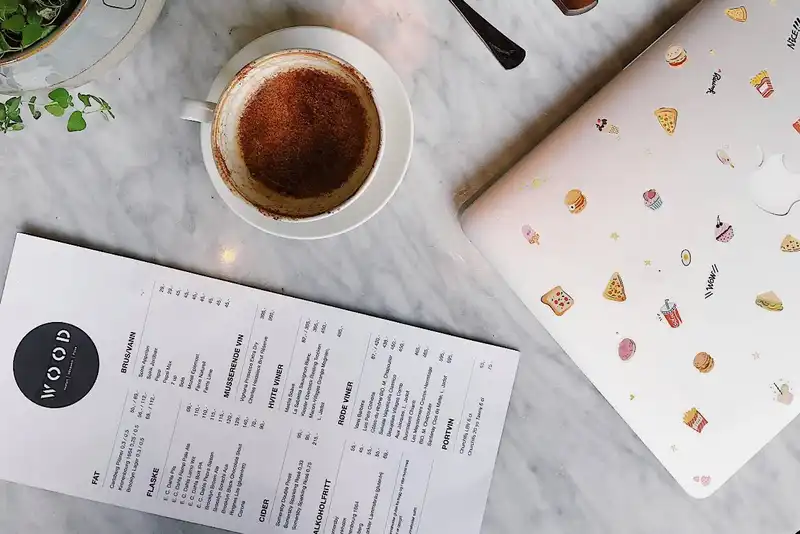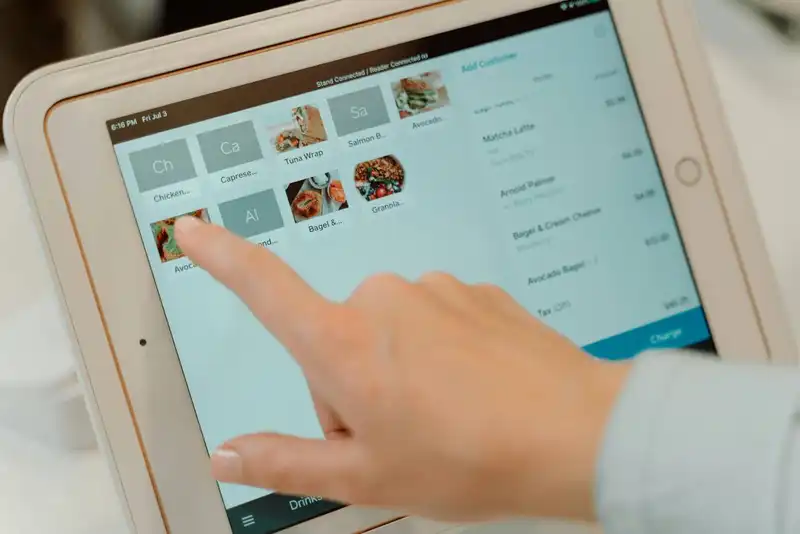What is a digital menu?
A digital menu is an electronic version of a restaurant's menu, accessible via devices like smartphones, tablets, or screens. It allows real-time updates, interactive features, and contactless ordering, enhancing convenience, hygiene, and customer engagement.
Digital Menu vs. Traditional Menu - Which is Right for Your Restaurant?
Understanding the Menu Landscape
A menu is more than just a list of food and drinks - it's how your customers decide what to order and how they feel about your restaurant. Choosing the right kind of menu is important because it can affect your sales, customer experience, and even how smoothly your restaurant runs.
Nowadays, many restaurants are switching from traditional printed menus to digital menus. In fact, a recent survey found that over 60% of restaurants in the U.S. have adopted some form of digital menu technology since 2020. This shows how quickly the industry is changing.
But traditional menus are still very common and work well for many places. Both types have their good points and drawbacks. Digital menus can be updated quickly and offer features like pictures and contactless ordering. Traditional menus are familiar, easy to use, and don't require any technology.
Overview of Traditional Menus

Traditional menus are the classic paper or printed menus you've probably seen in restaurants for decades. They usually come as laminated sheets, booklets, or single-page flyers. These menus are handed to customers when they sit down or are placed on tables for easy browsing.
One big reason traditional menus remain popular is their simplicity. They don't need any technology, internet connection, or devices to work. Customers just pick up the menu and start deciding what they want. For many people, especially those who aren't comfortable using smartphones or tablets - this straightforward approach feels natural and familiar.
Traditional menus are also low-tech and inexpensive to create. You can design and print them yourself or use a local print shop, and you don't have to worry about software updates or technical glitches. Plus, there's no learning curve for staff or customers since everyone knows how to read a printed menu.
However, traditional menus have some limitations. Every time you want to update prices, add new dishes, or remove unavailable items, you need to print a new batch. This can add up in cost over time. Also, printed menus wear out with constant handling - they can get torn, stained, or dirty, which affects your restaurant's image.
Especially after the pandemic, hygiene became a bigger concern. Paper menus can carry germs if not cleaned or replaced regularly, which can make some customers uneasy. Despite these challenges, many restaurants still trust traditional menus because of their ease and familiarity.
Simplify Multi-Channel Ordering
Get started with Altametrics to streamline your POS!
Overview of Digital Menus
Digital menus are electronic versions of your restaurant's menu that customers can access using devices like smartphones, tablets, or screens at the table. Instead of handing out paper menus, you might display a QR code that customers scan to see the menu on their phones, or provide tablets directly at the table.
One of the biggest advantages of digital menus is their flexibility. You can update prices, add or remove items, and change specials instantly without having to print anything new. This is especially useful if your menu changes often due to seasonal ingredients or daily specials.
Digital menus also offer a more interactive experience. You can include photos of dishes, detailed descriptions, allergen information, or even customer reviews. These extras help customers make more informed choices and can encourage them to try new items.
Another important benefit is hygiene and safety. Since customers use their own devices or digital screens that can be sanitized easily, digital menus reduce the risk of germs spreading - a concern that has grown since the pandemic.
However, digital menus do require some technology and setup. You need reliable internet access and devices that work smoothly. There may be an initial cost for software or hardware, and staff may need some training to assist customers with the new system.
Pros of Traditional Menus
Traditional menus come with several advantages that make them a reliable choice for many restaurants. First and foremost, they offer a tangible, familiar experience. Many customers prefer holding a physical menu in their hands as it feels straightforward and easy to navigate. This is especially true for older guests or those who aren't comfortable using smartphones or tablets, making traditional menus inclusive for all age groups.
Another strong benefit is the low upfront cost and simplicity. Printing menus doesn't require special technology or software. You can design a menu once and print multiple copies without needing technical support or internet access. This simplicity also means that your staff doesn't need any special training to manage or explain the menus to customers, which can save time and reduce errors.
Traditional menus are also highly reliable since they don't depend on internet connectivity, power supply, or electronic devices that might malfunction. This can be particularly useful in areas with unreliable internet or in casual dining settings where customers expect a straightforward ordering process.
Additionally, many restaurants appreciate the classic, trustworthy feel that printed menus bring. For some dining styles - like fine dining or family-run establishments - a traditional menu supports the overall atmosphere and brand image.
Finally, traditional menus are easy to customize in terms of design and texture, allowing for creative options like embossed paper, unique fonts, or even handwritten specials that give a personal touch.
Cons of Traditional Menus
While traditional menus have many strengths, they also come with some drawbacks that restaurant owners should consider. One of the main challenges is the cost and effort involved in updating them. Every time you want to change prices, add new dishes, or remove items, you need to print new menus. This can become expensive and time-consuming, especially if your menu changes frequently. It also means you may end up with outdated menus on tables, which can confuse customers.
Another issue is the wear and tear that paper menus experience. With constant handling, menus can quickly become dirty, stained, torn, or faded. This not only looks unprofessional but can negatively impact how customers perceive your restaurant. Keeping menus clean and in good condition requires regular maintenance or reprinting, adding to your costs.
Hygiene concerns have become more important in recent years, especially after the COVID-19 pandemic. Paper menus are passed between multiple customers, and unless they are sanitized or replaced regularly, they can carry germs. Some diners may feel uncomfortable touching shared menus, which could affect their overall experience or even deter them from dining in.
Additionally, traditional menus offer limited flexibility. You can't quickly update specials or item availability in real-time. This lack of immediacy makes it harder to respond to supply shortages or adjust prices based on demand. It also means missing out on opportunities to promote daily specials or new dishes dynamically.
Pros of Digital Menus

Digital menus bring a range of benefits that can make running a restaurant smoother and more efficient. One of the biggest advantages is instant updates. Unlike printed menus, digital menus allow you to change prices, add new items, or remove dishes immediately without any printing costs or delays. This means you can keep your menu accurate and fresh, especially if you have seasonal specials or if certain ingredients run out unexpectedly.
Another major benefit is contactless ordering, which has become very important since the pandemic. Customers can view the menu on their own smartphones or on tablets provided by the restaurant, reducing physical contact and increasing hygiene. This can help customers feel safer and more comfortable when dining in.
Digital menus also provide an interactive and engaging experience. You can include pictures of your dishes, detailed descriptions, nutritional info, or even allergy warnings. These extra details help customers make informed decisions, which can lead to higher satisfaction and sometimes even increased sales.
Beyond improving the customer experience, digital menus can also give you valuable data. Many digital menu systems track which items are popular, how long customers spend browsing, and what combinations are frequently ordered. This data can help you make smarter decisions about menu design and inventory management.
Finally, digital menus offer environmental benefits by reducing paper waste and printing needs. Over time, this can lower your costs and appeal to eco-conscious customers.
Cons of Digital Menus
While digital menus offer many advantages, there are also some challenges restaurant owners need to consider before making the switch. One of the biggest hurdles is the initial cost and setup. Implementing digital menus may require purchasing hardware like tablets or screens, investing in software or apps, and ensuring reliable internet connectivity. For some small or budget-conscious restaurants, these upfront expenses can feel overwhelming.
Another concern is technology reliability. Digital menus depend on stable internet and functioning devices. If the connection goes down or the hardware malfunctions, customers may not be able to view the menu or place orders easily, leading to frustration and slower service. Unlike traditional menus, digital ones require ongoing technical support to keep things running smoothly.
There's also a learning curve for both staff and customers. Not everyone is comfortable using smartphones, tablets, or QR codes, especially older guests or those less familiar with technology. Staff may need training to assist customers or troubleshoot issues, which can take time and resources.
Privacy and data security are additional considerations. Some digital menu systems collect customer data or track ordering habits. It's important to ensure this information is handled responsibly and that your system complies with data protection laws to avoid any potential risks or customer concerns.
Lastly, while digital menus are very flexible, they might not fit every restaurant's style or brand. For example, some fine dining or traditional establishments prefer the classic feel of printed menus to match their ambiance and customer expectations.
Making the Right Choice for Your Restaurant
Deciding between a digital menu and a traditional menu isn't a one-size-fits-all choice. It depends on your restaurant's unique situation, your customers, and what you want to achieve.
Start by thinking about your customer base. Are most of your guests comfortable with technology? Younger crowds may prefer digital menus with interactive features, while older customers might favor the familiarity of printed menus. Understanding your audience helps ensure your menu format matches their preferences and makes ordering easy.
Next, consider your budget and resources. Digital menus require an upfront investment in devices, software, and training, but they can save money over time by reducing printing costs. Traditional menus cost less to start but can become expensive if you frequently update your menu. Weigh these ongoing expenses against your financial situation.
Also, think about your menu's flexibility. If you often change items, prices, or daily specials, digital menus provide the ability to update instantly without extra printing. If your menu is mostly stable, printed menus may work just fine.
Don't overlook your restaurant's style and atmosphere. Some dining experiences rely on the charm of a physical menu to create a specific ambiance. In those cases, a traditional menu supports your brand and guest expectations better.
Finally, a hybrid approach could be a good solution. For example, offer printed menus for dine-in customers who prefer them and provide a digital option for takeout or delivery orders. This way, you serve different customer needs without fully committing to one format.
Whatever you choose, regularly review how well your menu format meets your needs and be open to adjusting as your business and customers evolve.
Must-Read Content


How to Design a Restaurant Menu That Increases Sales

How to Use Data to Optimize Your Menu for Restaurant Performance

The Ultimate Guide to Restaurant Menu Engineering










